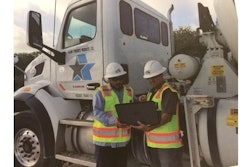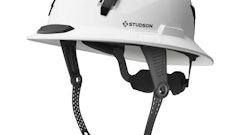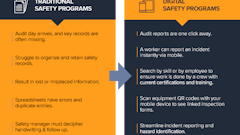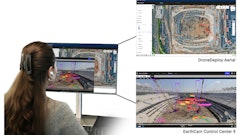
Telematics is often regarded as a technology used to gather current vehicle and equipment locations, but the benefits go far beyond just location updates for construction businesses. Telematics provides the tools required to help businesses tackle their most significant business challenges, like improving driver safety fleet wide.
Crashes on the job have far-reaching financial and psychological effects on employees, their coworkers and families, and their employers. To help reduce risk for their mobile workforces, construction businesses are turning to telematics to enhance their safety protocols by using the information to improve driver policies, monitor driver behavior, and maintain safer vehicles.
Best Practices to Writing Driver Policies with Telematics Data
Written safety policies are the foundation of a safety program. After all, how will drivers know what’s expected if it’s never presented to them?
Before holding employees accountable with telematics data, it’s important to lay some groundwork as to how, when, and why the information will be used. It’s highly recommended to put regulations in place around the use of telematics so employees are aware from the beginning.
When introducing new driver policies that incorporate telematics, fleet managers can follow these best practices to obtain the best results:
- Transparency - Clearly present the use of telematics data to measure performance and monitor compliance. When the time comes to hold employees accountable, there could be backlash about tracking their vehicles without their knowledge.
- Define Consequences – To ensure policies are effective, there should be clear consequences defined when policies are not followed. Penalties might range from strikes that lead to loss of driving privileges to termination. Whatever they may be, drivers should be made aware before ever operating a company vehicle.
- Embrace Safety Companywide - Creating a culture of safety is key to the broader acceptance of the policy. Safety policies should be embraced at every level of the organization, from executives, managers, and supervisors to every driver in the company.
Once safety protocols are defined, fleet managers can start using telematics to monitor and correct unsafe driving when it happens to proactively improve driver safety.
[SPONSORED] Increase profitability and efficiency with your fleet now with a free fleet management system demo >>
Stop Unsafe Driving When It’s Happening
Telematics systems are used to improve driver behavior by monitoring metrics such as drive time, unauthorized usage, idle time, hard braking, rapid acceleration, and speeding. Speeding is one of the leading causes of accidents on our roadways. According to the U.S. Department of Transportation’s 2015 Motor Vehicle Crashes report, there were 9,557 fatalities caused by speeding-related accidents. Telematics enables fleet managers to monitor the speed of each of the vehicles, in real-time, and to determine if any are traveling at unlawful speeds.
To correct unsafe driver behavior, it’s recommended to provide ongoing performance feedback with the data gathered from the telematics system.
Maintain Safer Vehicles
According to the National Highway Traffic Safety Administration (NHTSA), 43% of critical pre-crash events that cause vehicle accidents are attributed to tire failure.
Staying on top of preventative services, like tire rotations, is one of the easiest ways to prevent accidents with telematics. The software’s maintenance module will automatically track run time and odometer readings, then send reminders when services like tire rotations and balancing, oil changes, emissions testing, or any other types of services are due to be completed. It is recommended to send maintenance alerts to management and drivers to ensure vehicles and equipment receive necessary services as soon as possible.
Although automated maintenance reminders are effective, a service may still slip through the cracks here and there. To proactively monitor overdue services, management should get in the habit of viewing scheduled maintenance reports. These reports should be available on-demand or can be automated by email on a daily/weekly/monthly basis. Any outstanding services will be flagged in red on the report so managers can take action and get them completed right away.
At the end of the day, when considering the objectives of a telematics implementation, no reasoning is quite as important as increasing safety for employees and the general public on the roadways. Using telematics as part of a fleetwide safety initiative will drive the program miles forward while providing the business with several other impactful benefits.
About the Author: Jenny Shiner is the Marketing Communications Manager for GPS Insight. She graduated from Arizona State University with a Bachelor's of Communication and is responsible for external marketing communication for all business segments that GPS Insight targets. Contact GPS Insight for more information on Telematics.


















